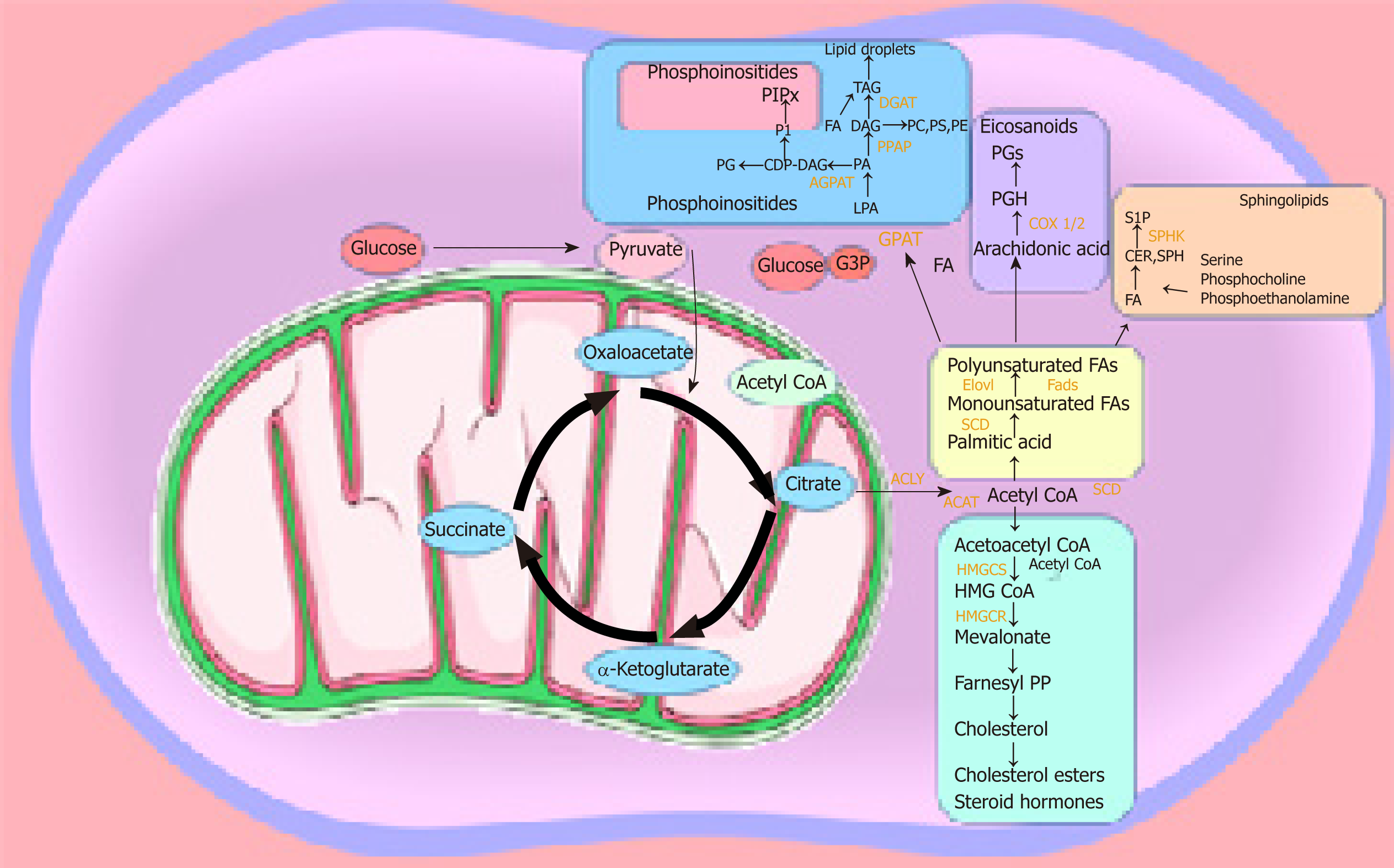Copyright
©The Author(s) 2019.
World J Stem Cells. Sep 26, 2019; 11(9): 693-704
Published online Sep 26, 2019. doi: 10.4252/wjsc.v11.i9.693
Published online Sep 26, 2019. doi: 10.4252/wjsc.v11.i9.693
Figure 2 Citrate produced through mitochondrial metabolism can enter the fatty acid synthesis pathway.
For example, citrate can enter the mevalonate pathway to produce steroid hormones and cholesterol esters, or it can go on to produce phosphoinositides and lysophospholipids. Both of these are powerful examples of signalling molecules. Therefore, the reason behind the enhanced metabolic activity, which was recently observed in cancer stem cells, must be understood.
- Citation: Begicevic RR, Arfuso F, Falasca M. Bioactive lipids in cancer stem cells. World J Stem Cells 2019; 11(9): 693-704
- URL: https://www.wjgnet.com/1948-0210/full/v11/i9/693.htm
- DOI: https://dx.doi.org/10.4252/wjsc.v11.i9.693









